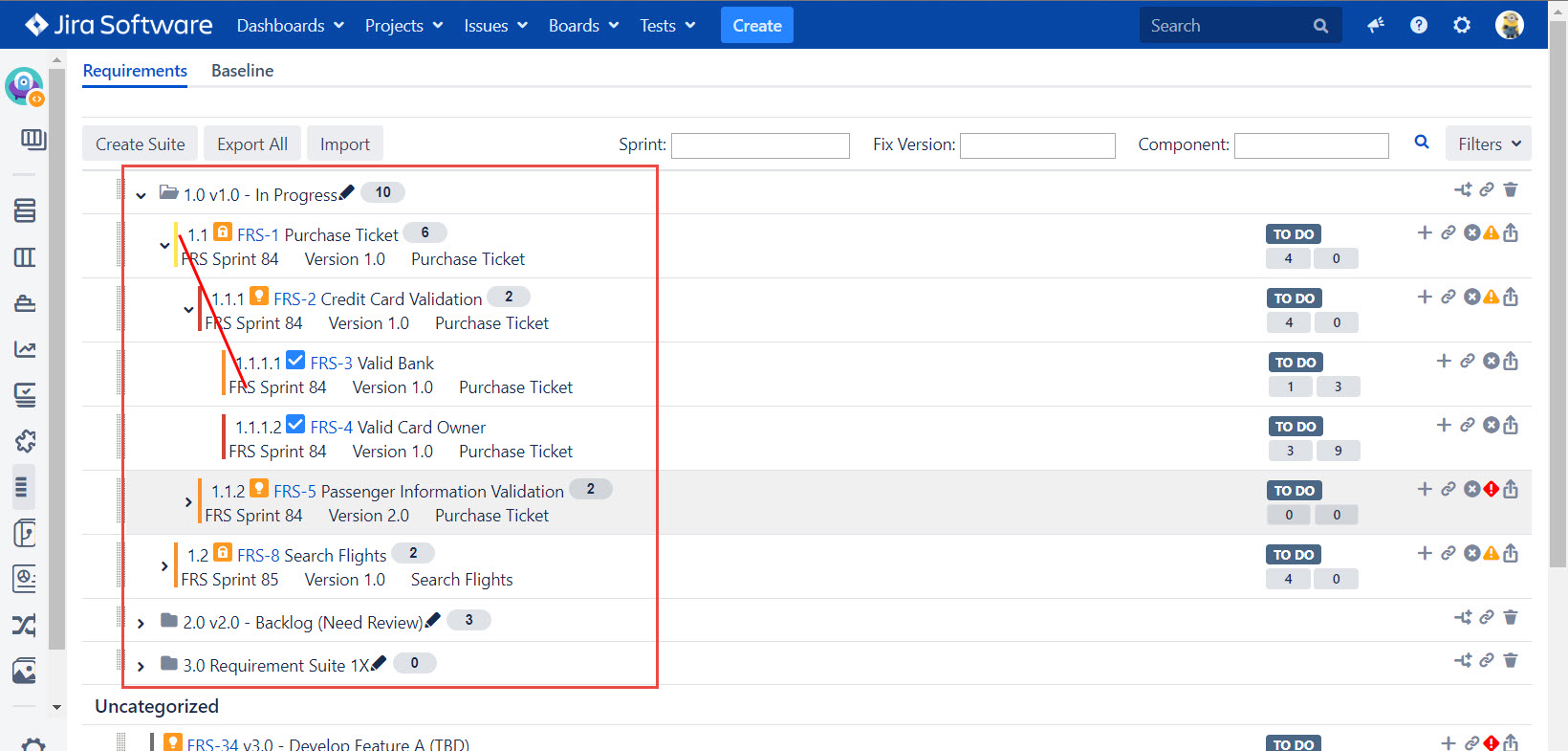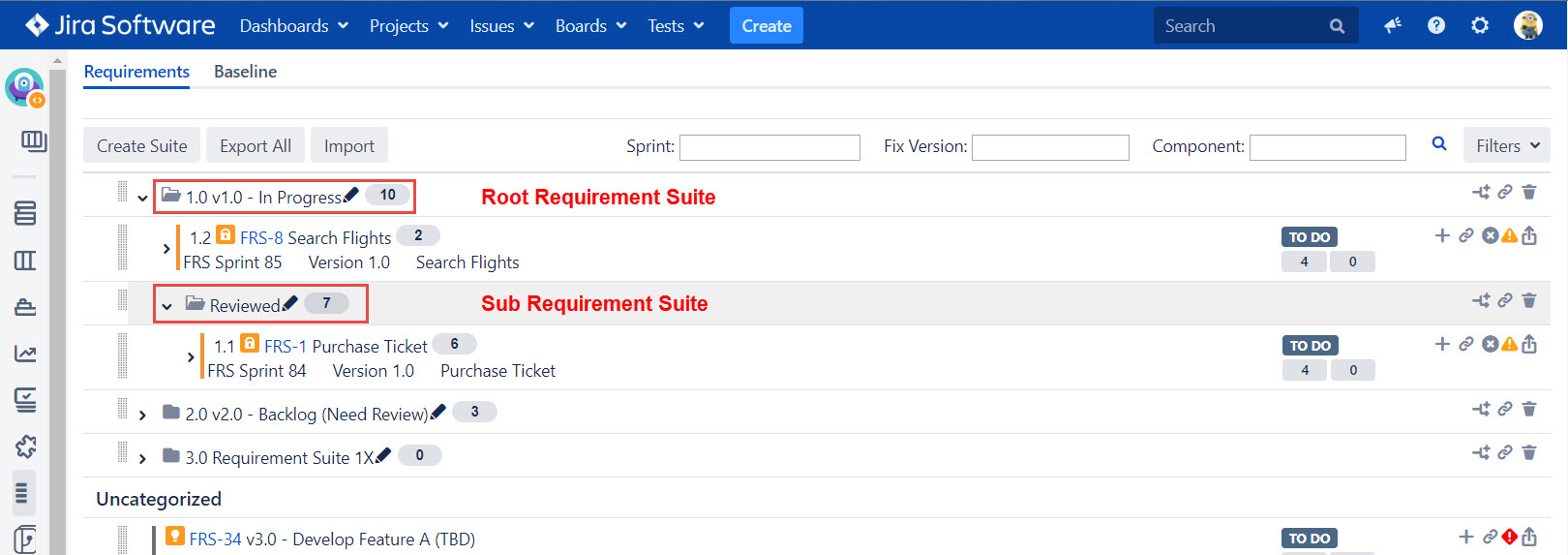Organize Requirements in Requirement Suites
Requirement Suites organize Requirements into groups. It structures Requirements logically.
Each Requirement Suite consists of a group of Requirements categorized either directly under it, or under multiple sub-suites that offer to group at subsequent levels. There are no limitations to the number of levels that can be created, thus constructing the desired organized structure as a Tree provides greater flexibility. The user can treat Requirement Suite as an Application module, Component, or Feature set; whatever helps the user to group and organize the Requirements into logical parts. Requirement Suite helps the user to find a particular group of Requirements more effectively.
You can either add a Requirement (with its child Requirement associations) to a Requirements Suite or remove a Requirement (with its child Requirement associations) from a Requirements Suite.
Any Requirement in Requirement Suite will be numbered as 1.1, 1.1.1, 1.1.2 ... automatically. It helps user be clear of requirement structure by referring these numbers, also makes requirement traceability with a more convenient way.

[Screenshot - UG90_Requirement_Suite_1]
Working with Requirement Suites
A tab named "Requirements" is created in the "Project Overview/Requirements" page after synapseRT is installed, as in the screenshot below:
To avoid any confusion:
- Requirement Suites those are listed at the top level (or root level) are called 'Root Requirement Suite'
- Requirement Suites those are nested in any 'Root Requirement Suite', are called as 'Sub Requirement Suite'

[Screenshot - UG90_Requirement_Suite_2]
